A blog is a type of online publication that typically consists of short, occasionally informal entries about recent events, thoughts on topics ranging from politics to personal experiences, or reviews of products.
These blogs are often updated regularly with new content. They can be used as an effective medium for sharing information and building relationships with others in the blogging community.
Some people think starting a blog is too hard, but many resources are available to help. Others may be intimidated by the process and don’t know where to start, but with some guidance, it’s easy to get started.
There are millions of blogs in the world, and even more active bloggers post at least once a month.
Table of Contents
Turn Your Story into a Blog Post
To help you generate leads, increase website traffic, and grow your brand, turn your story into a blog post.
There are many ways to do this. For example, you could write a case study about how you solved a particular problem or developed a new product.
You could also write about unique challenges or successes you’ve experienced in your business. Whatever the topic, make sure to share details that will interest readers and motivate them to learn more.
Another way to generate leads is through social media marketing. Utilize relevant hashtags and post engaging content that will bring in followers.
Once they’re hooked, ask them to take action by signing up for your mailing list or visiting your website. With these methods at your disposal, turning your story into a blog post can help you reach new heights in business!
Blogs are a great way to connect with others and share your ideas, but they can also be competitive.
So, you’ll need to make sure that your blog looks great and is packed with high-quality content if you want people to keep coming back.
Plus, being updated regularly is key – otherwise, people will start paying more attention to the blogs that are popular right now instead of the ones that have been around for a while.
Choosing the perfect domain name for your blog.

Before you design a blog page, you need to choose a domain name. Your domain name is what users will type into the address bar to find your blog. You want to choose a domain name that is memorable and easy to spell. You also want to choose a domain name that reflects the content of your blog.
Once you have chosen a domain name, you need to find a place to host your blog. WordPress is a popular platform for bloggers. Many web hosts offer WordPress hosting. You will need to choose a web host that offers the features and services that you need.
Domain names and web hosting can be confusing. But don’t worry, there are many resources available to help you get started. Once you have chosen a domain name and found a web host, you can start designing your killer blog!
Once you’ve found a good domain name, it’s time to decide where to host it. There are many options available today, including dedicated web hosting companies and shared hosting services. You should also consider using a web design company or an online marketing agency to help you get started.
Through Bluehost, you can purchase your domain name and make use of its web hosting services. This makes them a one-stop shop for those looking to start a WordPress blog.
Their web hosting is reliable and provides good uptime, which is important for a WordPress site. They also offer a free domain name when you sign up for their web hosting services, which is a great perk.
So, if you want your blog to be more than just a place to post articles, you’ll need to make sure your blogging platform is compatible with the rest of your website.
Once you have your website set up and your blog platform selected, it’s time to start writing content. You can write about anything that interests you; after all, your blog is your voice on the internet.
But if you want to make money from your blog, there are a few things you should keep in mind.
The first thing you need to do is create a unique and compelling title for your blog post.
How to Create a Memorable and Catchy Domain Name
To come up with the best domain names for your business, you have to think about what people are searching for online.
Your domain is your online identity. It’s how you’re found online and makes the first impression. So, it’s important to choose one that represents you perfectly.
There are a few things to consider when choosing a domain. First, think about what you want people to find when they search for you online. Do you want them to find your blog? Your website? Your social media profile? Once you know what you want people to find, it’ll be easier to choose a domain that reflects that.
The most important thing is to pick one that represents you perfectly. A good domain name is short, easy to remember, and describes what you do or who you are.
Second, keep it simple. A complex or hard-to-pronounce domain can be difficult for people to remember or find. And finally, make sure it’s available! Once you’ve found the perfect domain, snap it up before someone else does.
If you’re having trouble finding the perfect domain name, try thinking of some keywords that describe your business or blog. Then, use a domain search tool to see if those keywords are available as domains.
Why Bluehost is the best web host for small businesses

When you decide to start a WordPress blog, one of the first things you need to do is choose a web host. There are many different web hosting companies out there, but we recommend Bluehost for small businesses. Here’s why:
1. Bluehost is one of the official WordPress recommended hosts. This means that they meet all of WordPress’s minimum requirements for hosting a site, and they also offer some features that are specifically designed for WordPress users.
2. Bluehost is very affordable. Their basic plan starts at just $3.95 per month, which is cheaper than most other web hosts. And since your WordPress blog will probably be small at first, you won’t need to worry about upgrading your plan for a while.
3. Bluehost offers great customer support.
Bluehost offers a range of WordPress hosting packages, from a standard plan for first-time bloggers to a fully managed hosting plan for those planning to scale their blog into a business.
No matter what your blogging goals are, Bluehost has a WordPress hosting plan that will give you the tools you need to succeed. Standard plans are perfect for those just getting started and include features like one-click WordPress installation and 24/7 customer support.
For bloggers looking to take their blog to the next level, Bluehost’s managed WordPress hosting plans offer automatic updates, increased security, and performance optimization – all while freeing up your time to focus on creating great content.
So, whether you’re just starting or ready to scale your blog into a business, Bluehost has a WordPress hosting plan that’s right for you.
Choose the Right WordPress Theme for Your Site
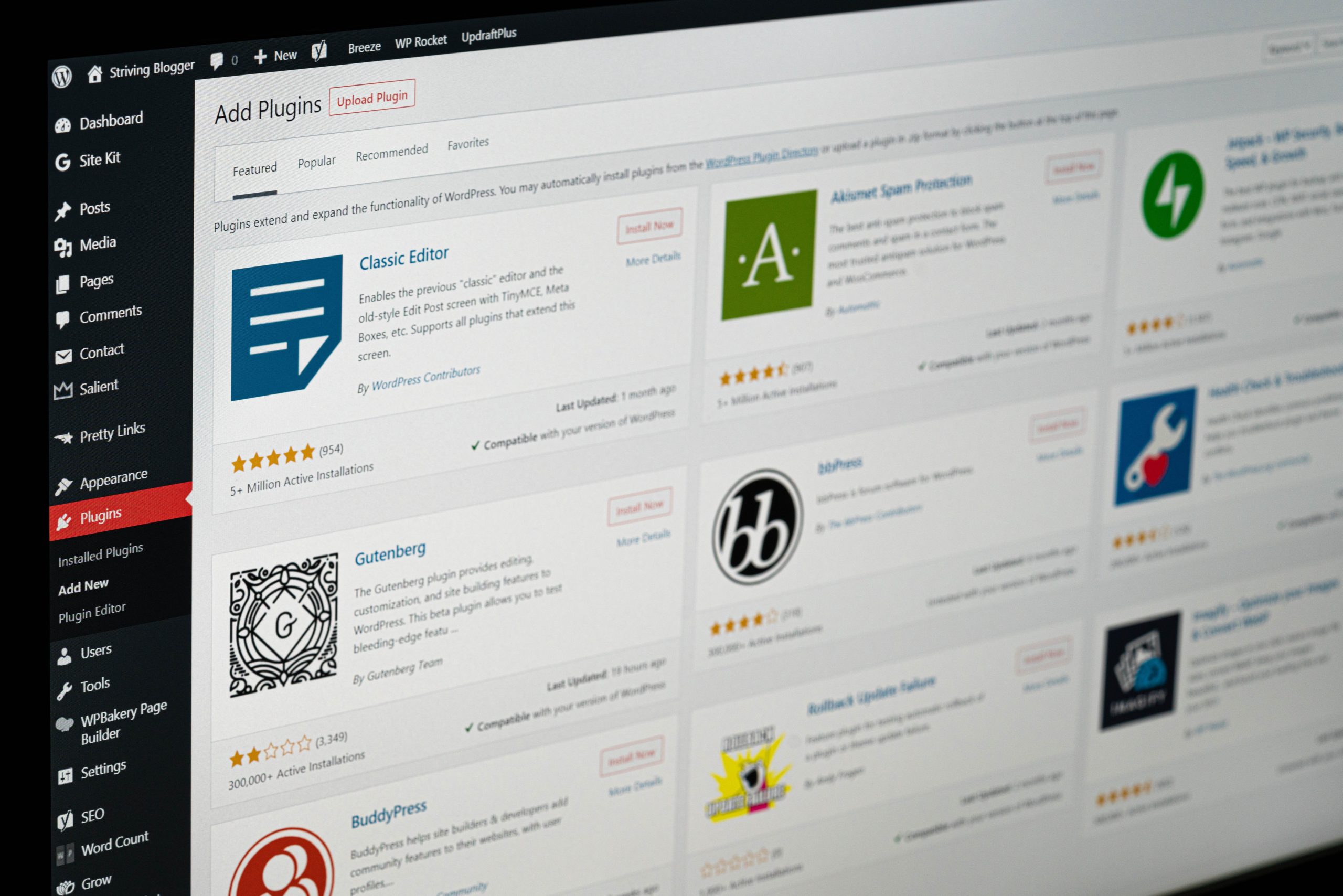
If you’re new to blogging, you may be wondering how to choose a WordPress theme that will help your blog succeed. Here are a few tips to keep in mind when making your selection:
1. Consider your audience. Who are you writing for? What kind of information do they want to see on your blog? Choose a theme that will appeal to them and make it easy for them to find the content they’re looking for.
2. Think about search engines. A well-designed WordPress theme can help your blog rank higher in search engine results pages. When choosing a theme, look for one that is optimized for SEO and includes features like social media integration and responsive design.
3. Make sure the theme is easy to use. You don’t want to spend hours trying to figure out how to set up your blog or customize your theme.
While you can certainly spend hours tweaking the perfect WordPress Theme for your site design, it’s important to keep in mind that the search engines will be looking at your site too. As such, you’ll want to make sure that your theme is designed with SEO in mind. Here are a few tips:
– Use a simple color scheme that won’t distract from your content.
– Stick to a single-column layout for easy scanning.
– Use headlines and subheads to break up your content.
– Keep your sidebar widgets to a minimum.
– Use fast-loading images that are optimized for the web.
As a WordPress user, you have access to thousands of themes that can be used for your blog. While it’s tempting to just choose the first theme you see, it’s important to take some time to find the perfect one for your blog. Once you’ve found the perfect theme, it’s time to start customizing it so it stands out from the crowd as uniquely yours.
Use SEO to Drive Tens of Thousands of Visitors Every Month

If you’re hoping to make money from your blog, SEO is key. Driving tens of thousands of visitors to your site each month is essential if you want to generate income through advertising, affiliate marketing, or product sales. Here’s how to use SEO to get the traffic you need.
First, choose the right keywords. Identify the terms and phrases that potential customers are using when they search for information related to your niche. Use these keywords throughout your site, in your titles and headings, in your content, and your meta tags.
Second, optimize your site for the search engines. Make sure that your site is well-structured and easy for search engines to crawl. Use keyword-rich titles and descriptions and create fresh content regularly.
Third, promote your site through social media and other online channels.
Why You Should Use Low Difficulty Keywords
When it comes to SEO, keyword research is everything. You can use tools like Ahrefs, Writerzen, or SEMrush to see how many people are searching for certain keywords and how difficult it is to rank for them. This information can help you refine your blog post to target the most popular keywords and improve your site’s search engine ranking.
With Ahrefs, Writerzen, or SEMrush you can see the monthly search volume for a given keyword, as well as the difficulty score. The difficulty score is based on several factors, including the number of pages that are ranking for that keyword and the quality of those pages.
If you’re trying to rank for a highly competitive keyword, you’ll need to make sure that your blog post is high-quality and relevant to that keyword. However, if you choose a less competitive keyword, you may have an easier time ranking in the search results.
How to Create the Best Web Content for Your Topic
Creating content that is the best on the web for your chosen topic and keyword can be a daunting task. However, by following some simple steps and strategies, you can create content that is not only informative and engaging but also ranks high in search engine results.
The first step is to choose a topic that is relevant to your niche or industry. If you are a blog about fashion, for example, you would want to choose a topic that is related to fashion such as “How to style a summer outfit” or “What are the latest trends for fall?”.
Once you have chosen a topic, it’s time to do some research. Use keyword research tools such as Google AdWords Keyword Planner or Moz Keyword Explorer to find keywords that are relevant to your topic and have low competition.
If you’re running a WordPress website, then you know how important it is to choose the right keywords. After all, they are what help your site show up on search engine results pages (SERPs). But with so many options out there, how do you know which keywords are the best for your WordPress site?
One of the most important things to keep in mind when doing keyword research is to think like your target audience. What terms would they use when searching for your content? Make a list of these potential keywords and phrases, and then use a tool like Ahref, Writerzen, or SEMrush to see how often they’re searched for.
Don’t Let Your Hard Work Go to Waste — Promote!
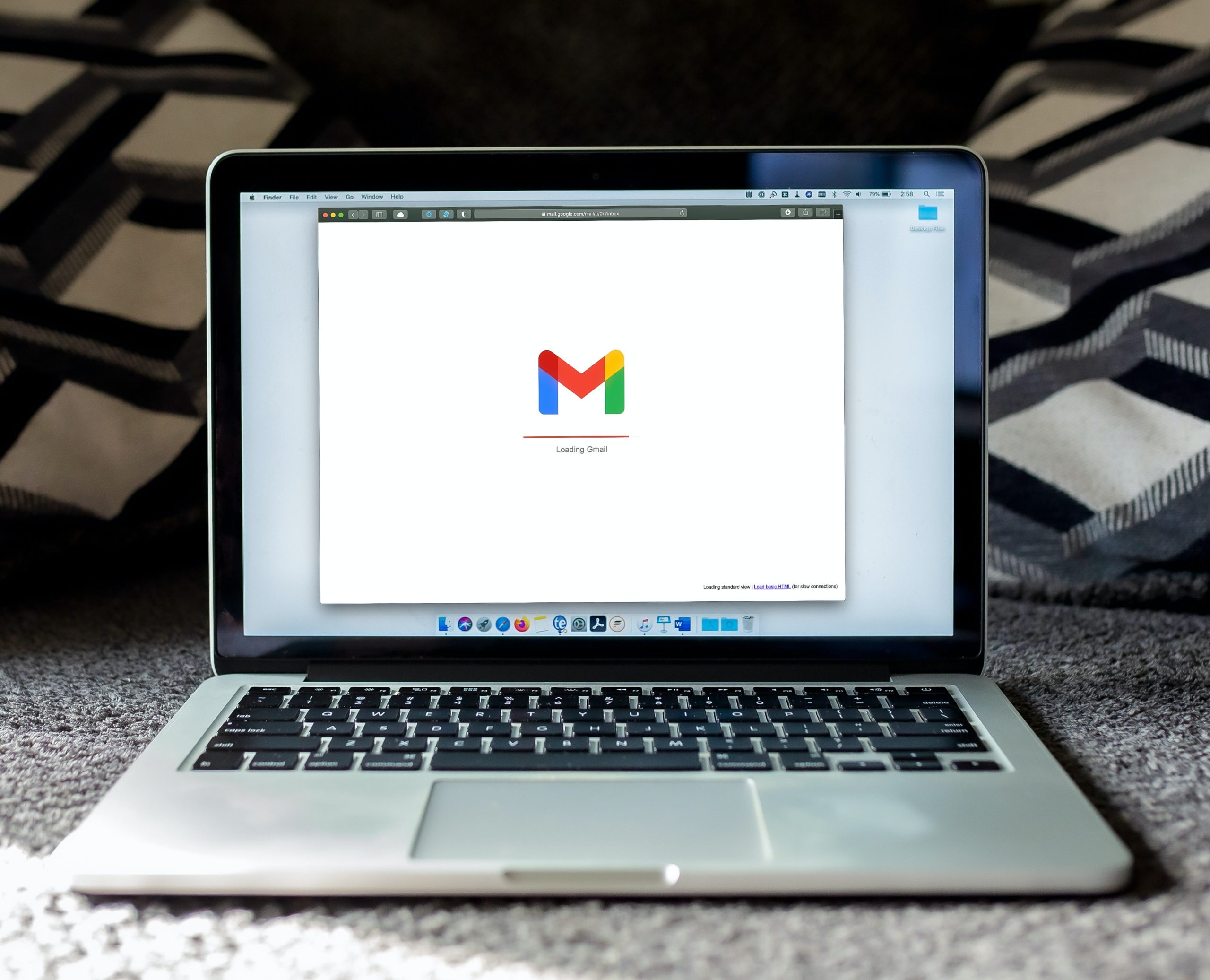
If you’re like most people, you spend a lot of time creating content. But how much time do you spend promoting it?
If you want people to see and read your content, you need to promote it just as much as (if not more than) you spent creating it.
One way to promote your content is through search engine optimization (SEO). This means making sure your content is keyword-rich and using other strategies to make sure it appears high in search results.
Another way to promote your content is through email marketing. This involves sending emails to potential readers with links to your latest blog post or article.
So next time you create something new, take the extra time to promote it too. Your hard work will pay off!
You’ve slaved over that blog post for hours, making sure every detail is perfect. But once it’s published, promoting it can feel like an afterthought.
Google loves fresh content, so make sure to keep your site updated regularly. A consistent stream of new material will help you rank higher in search results and keep readers coming back for more. Whatever promotion method you choose, put in the effort and watch your traffic soar.
How to Customize your Design for Success
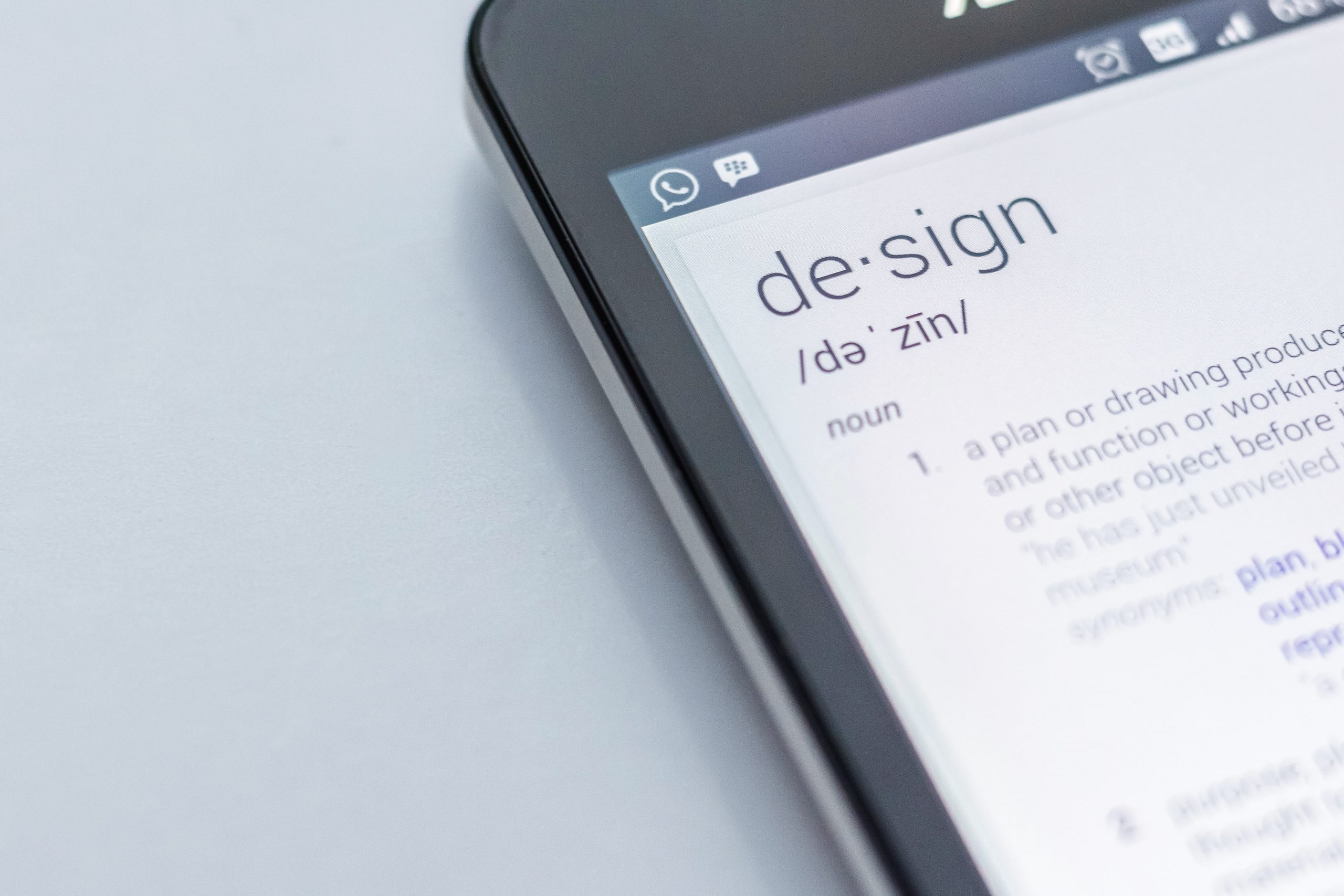
If you’re starting a blog, one of the first things you’ll want to do is customize it for functionality. You can do this by adding various WordPress plugins. But before you start adding plugins, it’s important to follow some basic design guidelines.
Your blog should be designed with your target audience in mind. That means creating content that’s relevant and interesting to them. It also means making sure your blog is easy to navigate and search engine friendly.
One way to make your blog more search engine friendly is to build links. You can do this by guest blogging on other blogs or by posting links to your blog on social media sites.
When it comes to your website, content is king. That’s why it’s important to have a well-thought-out content strategy that takes into account your target audience and what you want to achieve with your site. One of the worst things you can do when it comes to your website content is to use stock photos.
Stock photos may be easy to come by and they may seem like a cost-effective solution, but they can do more harm than good. First of all, they make your site look unprofessional and cheap.
Secondly, they can hurt your SEO efforts because search engines will penalize you for using duplicate content. Finally, using stock photos puts you at risk of alienating your target audience because the people in the photos are not representative of them.
If you want your website to be successful, don’t use stock photos.
When it comes to icons, consistency is key for any content strategy. By using the same iconography across all platforms, you can create a strong visual identity for your brand that will resonate with your target audience.
Not only that, but consistent use of icons can also help with link building. If people know what to expect from your brand, they’re more likely to click on links and share your content.
So, if you’re looking to create a strong visual identity for your brand, be sure to use icons consistently across all platforms. Your target audience will thank you for it!
Improve your Website’s Ranking with Strategic Link Building

Content strategy and link building go hand-in-hand. Link building is an extension of SEO and should be given just as much attention. Quality backlinks to your website are one of Google’s strongest indicators for determining a site’s ranking.
A good content strategy will naturally attract high-quality backlinks. Creating informative, well-written articles that are relevant to your niche is the best way to get other websites to link to yours. Conversely, a bad content strategy can harm your website’s ranking. That’s why it’s so important to get it right.
Link building should be an integral part of your overall SEO strategy. By focusing on creating high-quality content, you’ll be well on your way to improving your website’s ranking and visibility in search results.
If you want to rank high in Google search results, you need high-quality content. That’s because no one is going to link to a lower standard content, and it doesn’t matter if you’re just starting a blog or have been around for years. The key to success is a solid content strategy. Here’s what you need to do:
1. Write quality content that people will want to read and share.
2. Promote your content through social media and other channels.
3. Make sure your website is easy to navigate and search engine friendly.
4. Analyze your traffic and track your link-building progress over time.
5. Rinse and repeat!
The Do’s and Don’ts of Creating Catchy Headlines

If you’re not getting the traffic to your blog that you want, it might be because your headline isn’t compelling enough. Think about what would make you want to click on an article. Your headline should be interesting, but also include keywords that people might search for.
A good headline is the key to getting people to read further into your content. If you can hook them in with an interesting headline, they’re more likely to stick around and read what you have to say. But it’s not just about being catchy – your headline should also include relevant keywords so that people can find your content when they’re searching for something specific.
If you’ve been struggling to come up with a good headline for your next blog post, don’t worry – there are a few different ways that you can determine what content will resonate with your audience.
One way to come up with ideas for blog posts is to think about the questions that your target audience is likely to have. What information do they need to make a decision or solve a problem? By providing helpful, informative content, you can position yourself as an expert in your industry and build trust with your readers.
Another way to generate ideas for blog posts is to look at what’s popular in your industry right now. What are people talking about? What are the hot topics? You can use Google Trends or social media platforms like Twitter to see what’s being talked about most frequently.
Your blog is your baby. You’ve spent hours, days, and weeks, crafting the perfect platform to share your voice with the world. And now that you’re finally ready to launch, you want to make sure everything is just right – especially your headline.
After all, your headline is what will pull readers in and make them want to stick around. So how do you craft a headline that packs a punch? The key is using active, dynamic verbs.
Why You Need to Write an Attention-Grabbing Intro

When it comes to blogs, the headline is everything. You could have the most interesting, life-changing content in the world, but if your headline doesn’t properly reflect that, you’re not going to get many readers. Your headline is essentially a promise to the reader about what they can expect from your blog post, so you mustn’t make false promises or undersell your content.
Once you’ve got a viewer past the headline and onto your actual blog post, you mustn’t let up. The fact that they’ve made it past the headline means that they’re at least somewhat interested in what you have to say, so now it’s your job to deliver on that promise. Keep them engaged with interesting stories, personal anecdotes, and whatever else you can think of to maintain their attention.
Make sure your blog post has a clear structure and flow. It should be easy to read and follow. Breaking up your text with subheadings can also be helpful.
And finally, don’t forget to proofread! Typos and grammar errors can make your blog look unprofessional and turn readers off. Take the time to edit carefully before you hit publish.
Content that Matters: How to Make yours Meaningful
When you’re looking for something to watch on YouTube, it’s easy to get sucked into a black hole of videos. You can start with one video and before you know it, hours have passed, and you’ve watched dozens of videos. With a blog, on the other hand, it takes more effort to engage.
This means you must be purposeful in your reading and make an effort to comment or start a discussion. But this also means that the content is usually of higher quality and more interesting than what you’ll find on YouTube. So, if you’re looking for something more substantial to read or watch, a blog is a better option than YouTube.
If you’re someone who struggles to keep up with a blog, you’re not alone. It takes a lot more effort to engage with a blog than it does to watch YouTube videos or scroll through social media. Here are a few tips to help you get started:
1. Set a schedule and stick to it. Whether it’s once a week or once a day, make sure you’re consistent with your posting. This will help you build an audience and keep them coming back for more.
2. Write about topics that interest you. If you’re passionate about what you’re writing, it will show through in your work and people will take notice.
3. Promote your blog. Once you’ve got some great content, make sure people know about it!
The Benefits of Format Scanning-Friendly Posts

Your blog posts are full of great information, but your readers might not be reading them from start to finish. Instead, they’re likely scanning for the information that’s most relevant to their situation.
That’s why it’s important to use keywords throughout your blog posts so that readers can easily find the information they’re looking for. Here are a few tips for starting your blog posts with keywords:
1. Use keyword-rich titles: Your title should be concise and to the point, and it should include at least one keyword that describes the content of your post.
2. Use keywords in your first paragraph: In addition to using keywords in your title, make sure to use them in your first paragraph as well. This will help Google index your post properly and make it easier for readers to find what they’re looking for.
For readers who are already familiar with the issue you’re tackling, subheads can help them skip background information to get to what’s new. For readers who are not yet familiar with the issue, subheads can provide a brief overview of what is being discussed.
There are a few strategies you can use to make sure your subheads are effective. First, start with a working headline for your article. This will help you determine what the main points of your article are, and which ones will be most important for readers who are already familiar with the topic.
Next, keep your subheads concise and clear. They should be easy to scan and provide a brief overview of what each section of the article will cover. Finally, make sure your subheads flow logically from one to the next. This will help readers follow your argument and easily find the information they’re looking for.
If you’re just starting a blog, there are a few subhead pitfalls you’ll want to avoid.
- For one, don’t make your subheadings too long. Not only will this make them harder to read, but it will also make them less effective in terms of search engine optimization (SEO).
- Another pitfall to avoid is using too many keywords in your subheadings. This can come across as spammy and will turn off readers. Stick to one or two keywords per subheading and use them sparingly.
- Finally, don’t forget to proofread your subheadings! typos can be costly in terms of both credibility and SEO. So, take the time to edit carefully before hitting “publish.
How to Boost Your SEO with Internal Linking

When you start a blog, it can be difficult to get traffic to your site. One way to help increase traffic is by creating internal links. Internal links are simply links from one page on your site to another page on your site. This helps Google find your content and index it properly.
Additionally, it can help you rank higher in Google search results. Creating internal links is easy to do and only takes a few minutes. Simply create new content and link to other relevant pages on your site. You can also use sites like Google Trends to find popular keywords that you can use to link to your content. By taking these simple steps, you can help increase traffic to your site and improve your chances of success.
If you’re a blog owner, you know how important it is to have great content. But what you may not realize is how important internal linking is for your blog’s success.
Internal linking is important for two reasons: SEO and helping your readers navigate your blog. When it comes to SEO, links are like votes – the more links you have pointing to your blog, the higher your ranking will be in Google search results. And when it comes to helping your readers, internal links can be a lifesaver. If they’re lost in a sea of text, a few well-placed links can help them find their way back to the beginning or jump to another related post.
So next time you’re creating content for your blog, take a few minutes to add some internal links.
Get More Shares and Subscribers with These Tips for Creating Amazing Images

If you’re a blogger, it’s important to have amazing images that will help your blog stand out and get noticed. Here are some tips on how to create stunning images that will boost your shares and subscribers:
1. Use Google Trends to see what’s popular and trending. This will give your ideas for what kind of images to create that people will be searching for.
2. Create content that is helpful and informative. People are more likely to share and subscribe if they feel like they’re getting something valuable from your blog.
3. Be creative with your images. Use unique perspectives, colors, and compositions to make your images stand out from the rest.
4. Make sure your images are high-quality. Poor-quality images will reflect poorly on your blog and won’t be as likely to be shared or subscribed to.
Images help people to read your content, keep them on your page longer, and make it easier for them to digest the information you’re giving them.
To create great images, you need to have a clear vision for what you want the image to communicate and then work hard to make sure that the final product delivers on that vision.
There are many different ways of creating great images, but ultimately it comes down to having a clear idea of what you want your photo or video to say and working hard so that your audience can understand and appreciate what you’re trying to communicate.
Tools that you need:
- Canva – Design tools for non-designers are available free of charge, but they come with paid icons. The $10/month version offers additional functionality, like instant image resizing.
- Unsplash – Find Images that are Appropriate for Your Project or Article
- MyStock Photos – A New Way to Get Free Stock Photos
- Iconfinder – You Won’t Believe How Affordable High-Quality Icons Can Be
Add charts and graphs – Visualizer is a great tool for creating charts and graphs that help readers process data quickly and look great in posts.
How to Optimize Your Website’s Structure for Maximum Engagement
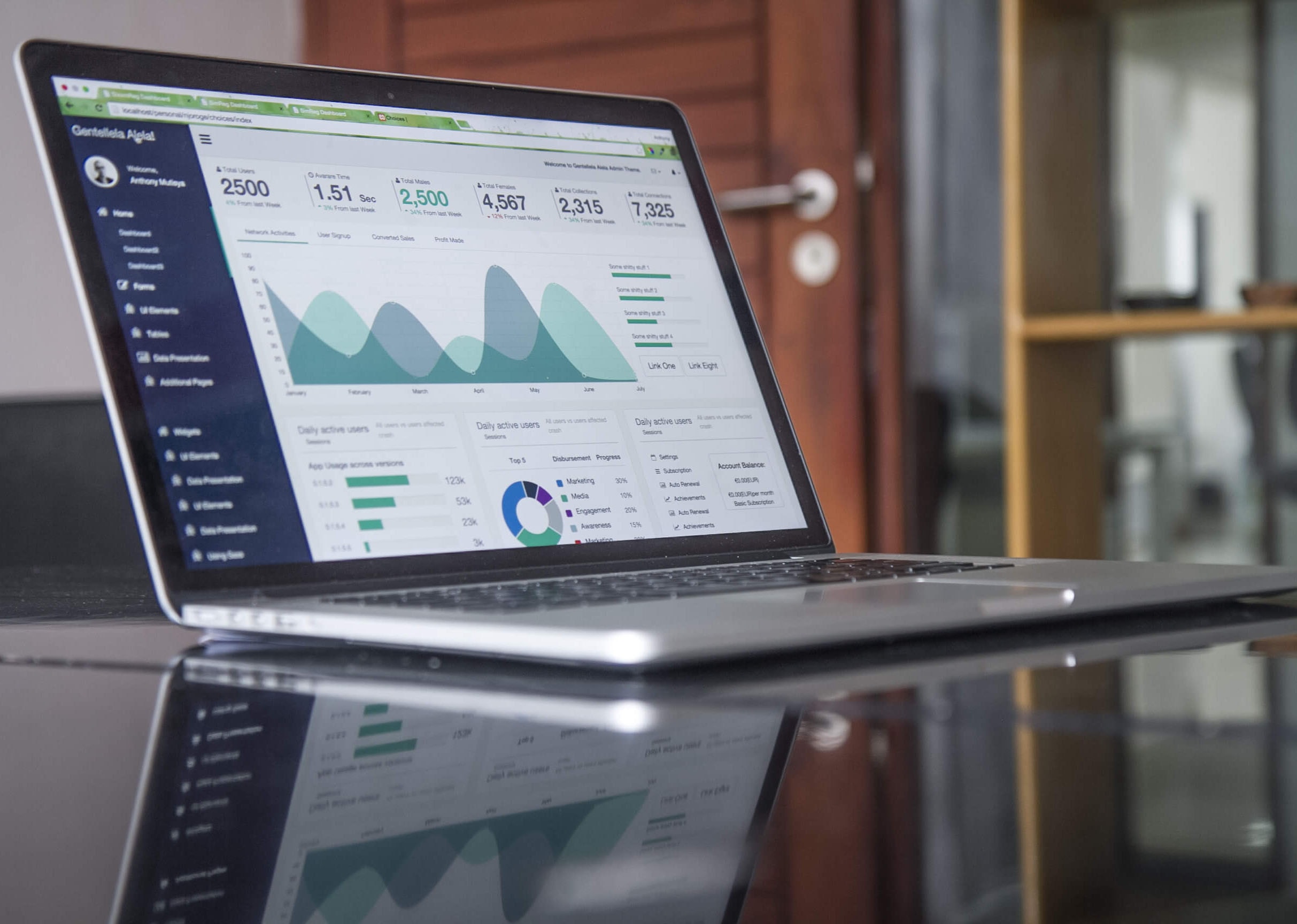
When starting a blog, there are several factors in how your website is technically structured that will impact your efforts with SEO. Page speed, HTTPS, and mobile responsiveness are all important factors to consider.
Page speed is important because it impacts how long it takes for your page to load. A faster page will rank higher in search results than a slower page. HTTPS is also important because it ensures that your website is secure and encrypted. Mobile responsiveness is key because more and more people are using their mobile devices to access the internet.
To make sure your blog is optimized for SEO, make sure to consider these factors.
So, what’s behind this growing impatience? One theory is that we’ve become used to instant gratification thanks to the ubiquity of smartphones and other devices that give us constant access to information and entertainment. Another possibility is that as we’ve become busier and our time has become more valuable, we’ve simply grown less tolerant of delays.
Whatever the reason, businesses need to take note and make sure their websites are loading as quickly as possible or they risk losing customers.
Any new blogger likely has a lot of questions about how to get started. One of the most important things to consider is the load speed of your blog. You want to keep the load speed of your blog below three seconds. And that’s the absolute maximum amount of time it should take. Any longer and you risk losing potential readers.
There are a few ways to help ensure your blog loads quickly. First, use high-quality images that are properly sized for web use. Second, limit the number of plugins and widgets you use. Third, keep your code clean and concise. By following these tips, you can help ensure your blog loads quickly and smoothly for all users.
Why You Should Make Time for Regular Content Audits

We always aim to produce high-quality, evergreen content that will be relevant for as long as possible. However, we also recognize that some of our blog posts will become outdated over time.
When this happens, we will update the post with new information and resources. We may also choose to unpublish the post if it is no longer relevant or accurate.
One reason why your blog content may stop being evergreen is due to changes in technology. For example, if you write a how-to article on using a specific software program and that software program gets updated, your article is no longer relevant.
Your content may also become outdated if there are changes in the trends within your industry. What was popular last year may not be popular this year, so it’s important to keep up with the latest trends. This is a good way to keep your content fresh and relevant.
Your content is not engaging
Your content may also become outdated if it is not engaging. If your content is not interesting or engaging, your audience will not want to read it. You can update your content to make it more engaging by adding new information, adding new photos or videos, or adding new interactive content. You can also update your content to make it more visually appealing.
You are not using social media
If you are not using social media to promote your content, your audience may not be able to find it. Social media is a great way to promote your content and reach a wider audience. You can use social media to share your content, interact with your audience, and build relationships with your audience.
You are not using keywords
If you are not using keywords in your content, your content may not be found by your audience. Keywords are important because they help your content be found by your audience. You can use keywords in your title, in the body of your content, and in the tags that you use when you share your content on social media.
You are not using analytics
If you are not using google analytics to track the performance of your content, you may not be able to improve it. Analytics allow you to track the performance of your content and to find out which parts of your content are working well, and which parts are not working well.
You can also use google analytics to find out which keywords are being used most often in your content, and how many people are visiting your blog from each country or region.
WordPress Plugins: More is Not Always Better
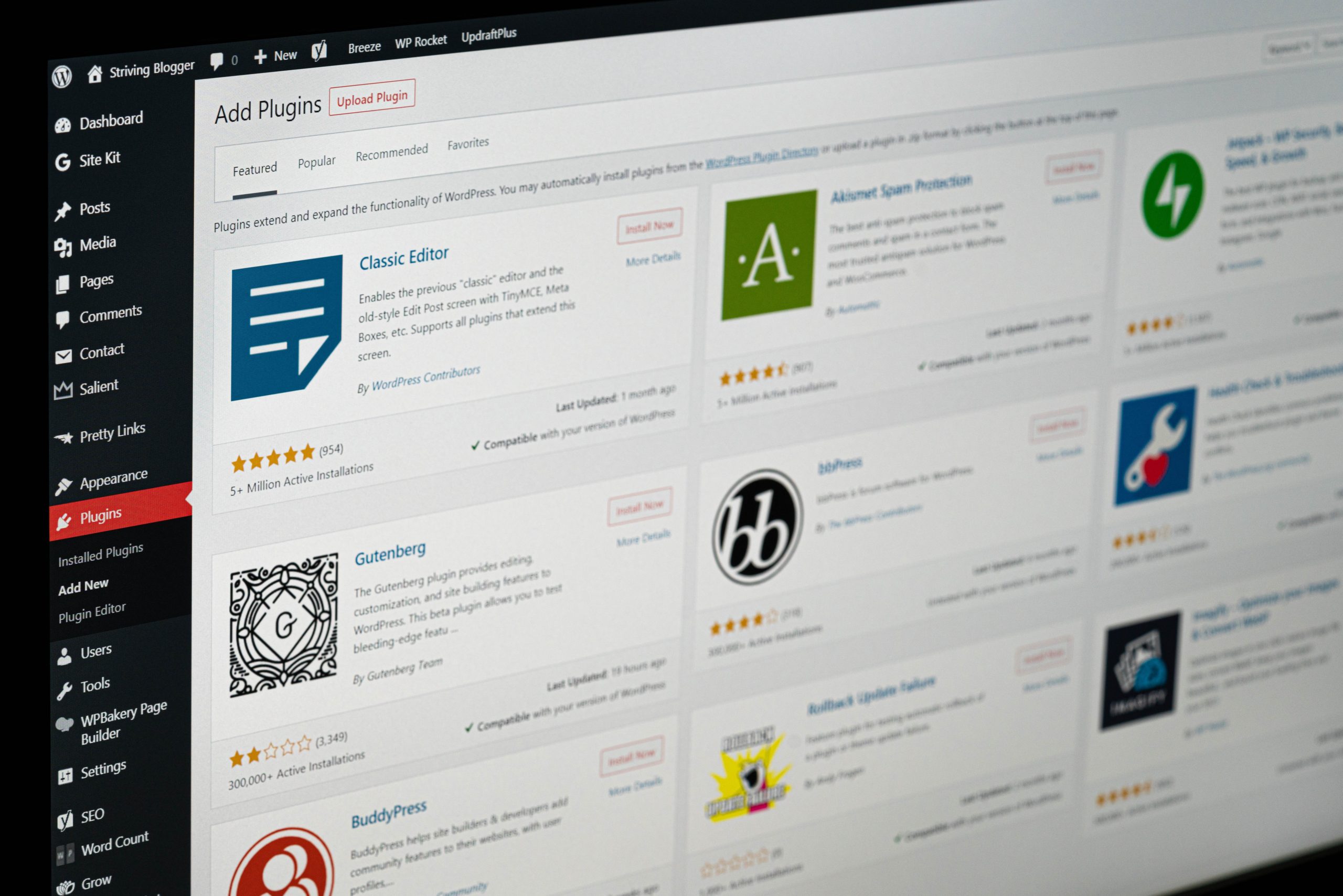
You don’t need all of those plugins currently running on your site. You might be able to get by with just a few. WordPress is a great platform for starting a blog, and it has plenty of features that will help you get started without needing to use all those extra plugins.
When it comes to plugins, less is more, especially when you’re just starting with a blog. It’s tempting to install every single plugin that looks even remotely useful, but more often than not, you’ll end up with a lot of bloatware that just slows down your site.
So which plugins are essential? That depends on what kind of blog you’re running, but here are a few must-haves:
-A security plugin: This is vital in today’s online world, where hackers are always looking for new ways to break into sites. A good security plugin will help protect your site from attacks and keep your data safe.
If you’re a blogger, you know that plugins and add-ons are a necessary part of the job. But what you may not know is that not all plugins play nice with each other. Sometimes they can interfere with each other, causing your blog to malfunction.
To avoid this frustrating scenario, it’s important to do your research before installing any new plugins. Read reviews and make sure that the plugin is compatible with your current setup. And if you’re ever unsure, don’t hesitate to reach out to the plugin developer for help.
With a little bit of planning, you can avoid potential conflicts and keep your blog running smoothly.
Use Your Readers’ Interests to Guide Your Topic Selection

When it comes to content ideas, many bloggers struggle to come up with something new. They want to write about topics that will interest their readers, but sometimes they don’t know what will captivate them. This can be especially challenging when they start with a random topic idea and hope that it turns out well.
If you’re concerned about the quality of your content, then you know the importance of providing content that your audience will enjoy. But what if you let your audience tell you what they want to hear? That’s a guaranteed win. By randomly picking topics based on what they want, you’ll be able to create content that they’re sure to love – and save time and energy in the long run. So why not give it a try?
Here are a few ways you can find out:
- Reach out to them on social media or via email and just ask!
- Send out a survey to your email list!
- Read the comments people left on your blog.
- Go to forums in your niche and see what people are asking about.
- Use Buzzsumo to find common questions around your topic:
Conclusion:
From Rough Draft to Final Piece: The Writing, Editing, and Publishing Process of Blogging!
One good rule of thumb is to focus less on the details of your grammar and more on getting a quality post out there and into the public sphere. There are three steps to this process: writing, editing, and publishing.
1. Writing
Writing is when you just sit down and let it all out. You don’t worry about the grammar or the wording. You don’t even worry about the organization. You just write. If you get stuck, you can always go back and revise it later.
2. Editing
Editing is when you go back and fix all of the little things. This is the step where you make your post as polished as you can.
3. Publishing
Publishing is when you hit “publish” on your blog or post it to your social media accounts. Usually, I recommend doing a little bit of editing before you publish, but sometimes you just have to hit “publish” and move on.
To write a great post, you should start by having a clear vision of what you want to say. This can be anything from a general idea to specific examples. Once you have that clear vision, you need to be able to express yourself well in written form.
Next, make sure your content is accurate and error-free. Finally, publish your post and see it live! There are lots of great tools out there for publishing (including WordPress), so find one that works best for you and get started.
One of the most important things when it comes to grammar is accuracy. If your content is incorrect, not only will your readers be confused but also Google might penalize your page as well. Always verify facts before publishing anything online so that you don’t alienate any potential readers or damage your site’s SEO ranking.
As far as publishing goes, there are a lot of options available these days. However, whatever tool or platform you choose should work best for the type of content you’re creating.
Blogs are unique in the way they work. They need a lot of preparation before they’re published, including creating a great headline and formatting, adding images and tags, and using social media buttons.

